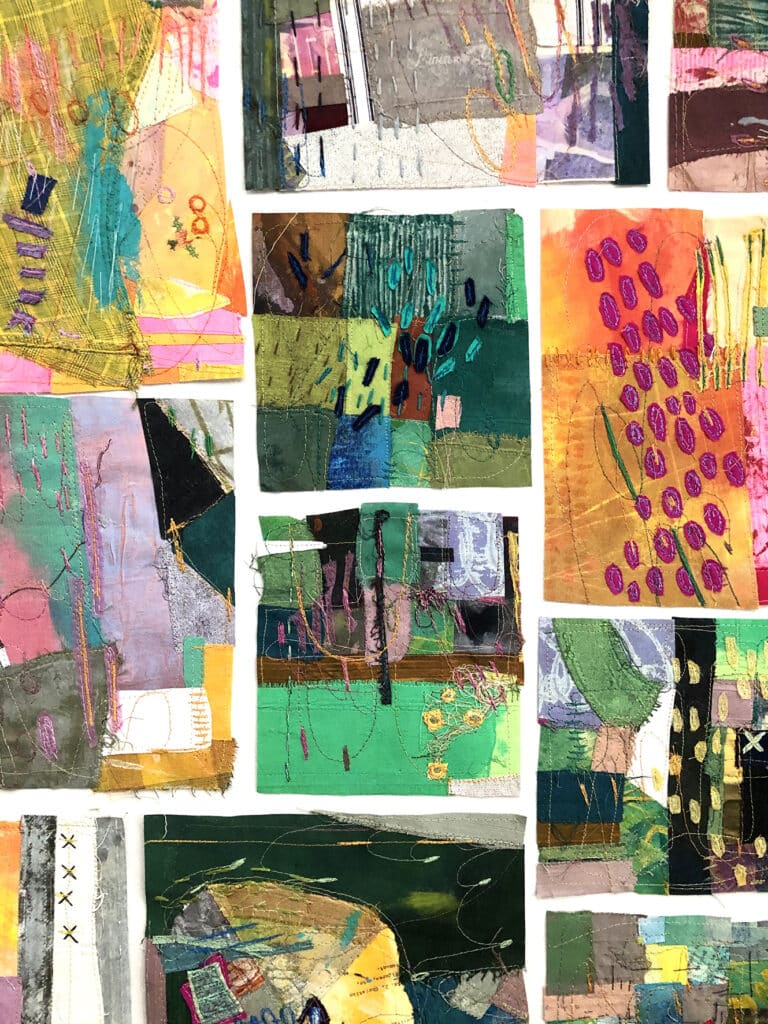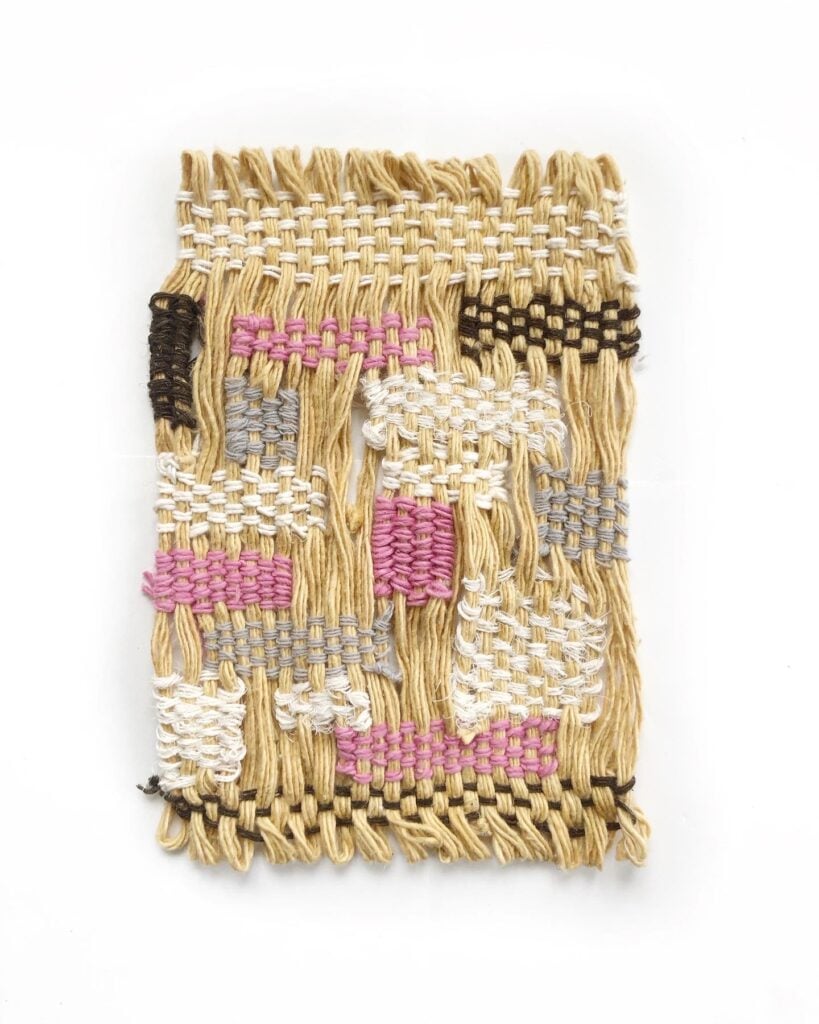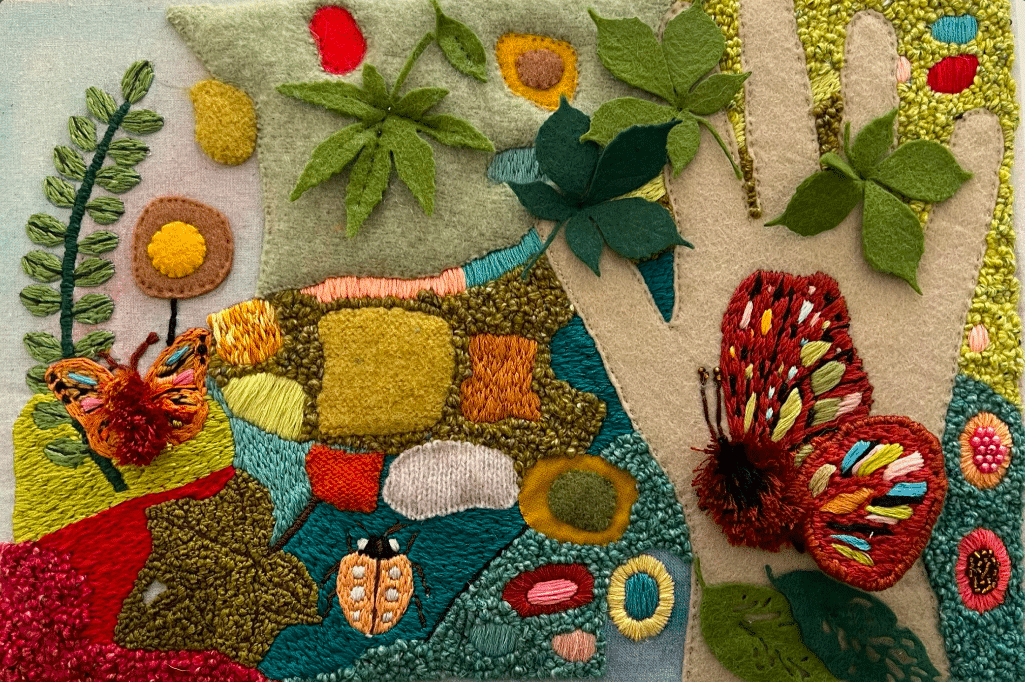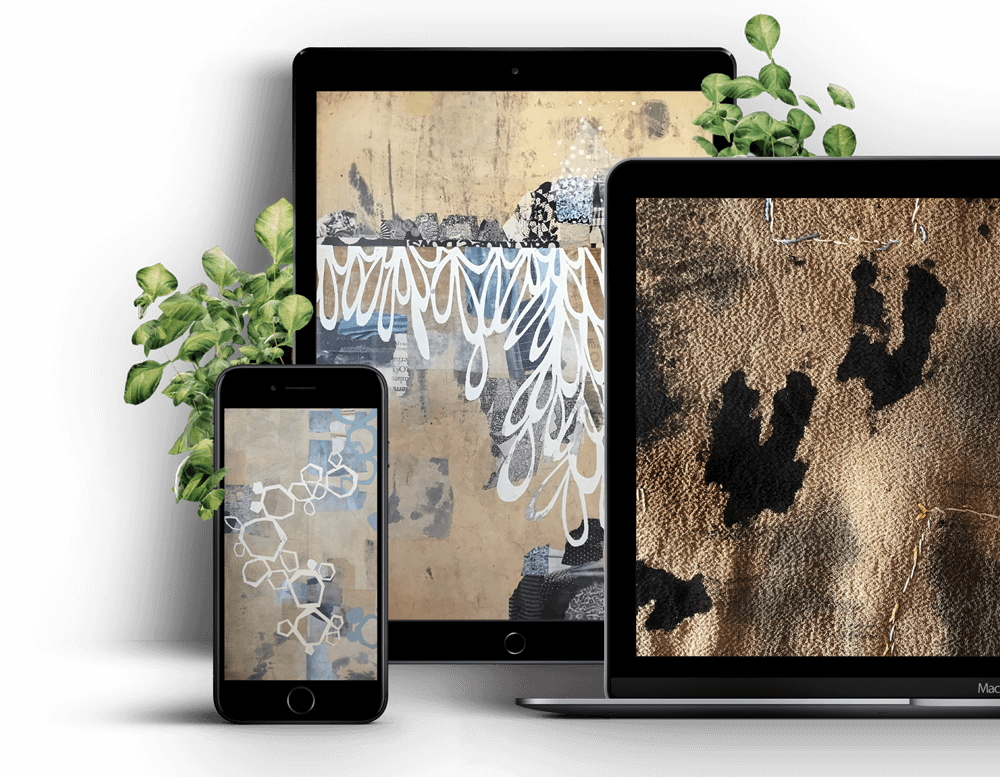Itamar Yehiel
Itamar Yehiel travelled the world and came back with a passion for embroidery. Fibre Arts Take Two really enjoyed learning about Itamar’s journey.
Itamar Yehiel’s Friday Feature Artist Interview can be found at the bottom of this page.
Treating his sculptural embroidery pieces as fine art, Berlin-based artist Itamar Yehiel
portrays the ageing, dismantling, decaying and rotting processes in nature, finding it aesthetically appealing and relating to the idea of accepting those changes as a natural part of life.
A self-taught artist, his delicate, thought-provoking and highly sensitive work combines thousands of years of embroidery traditions with those he developed to create a new and contemporary language of three-dimensional embroidery pieces with burly and inspiring art.
After spending over a decade travelling the world, Itamar says, “Just like embroidery, nature is a global language. It relates to all individuals and cultures. I use its vast variety of objects, colours, shapes and textures as a language to portray emotions and stories”.
Fibre Arts Take Two heard some of those stories and found out more when we recently sat down for a chat with Itamar.
A lifelong journey
Itamar may have taken the long road in starting his artistic career, but the embroidery was always there. “There was always embroidery at home,” he says, “My mother used to do embroidery, and it was always around as part of the home part of what’s happening.”
His interest in embroidery was piqued, though, when he started travelling the world, “When I started travelling,” says Itamar, “it was always an interest to me to look at the traditional handcrafts in general and embroideries specifically, in all the different countries that I visited. It wasn’t my main focus, but it was always around, and the more countries I visited, the more different cultures and more places that I saw; embroidery was there. It slowly started to take more and more of my attention because I saw that it’s always there, everywhere, unique in every continent, in every culture, and some sort of storytelling is going on using embroidery. And I just found it intriguing.”
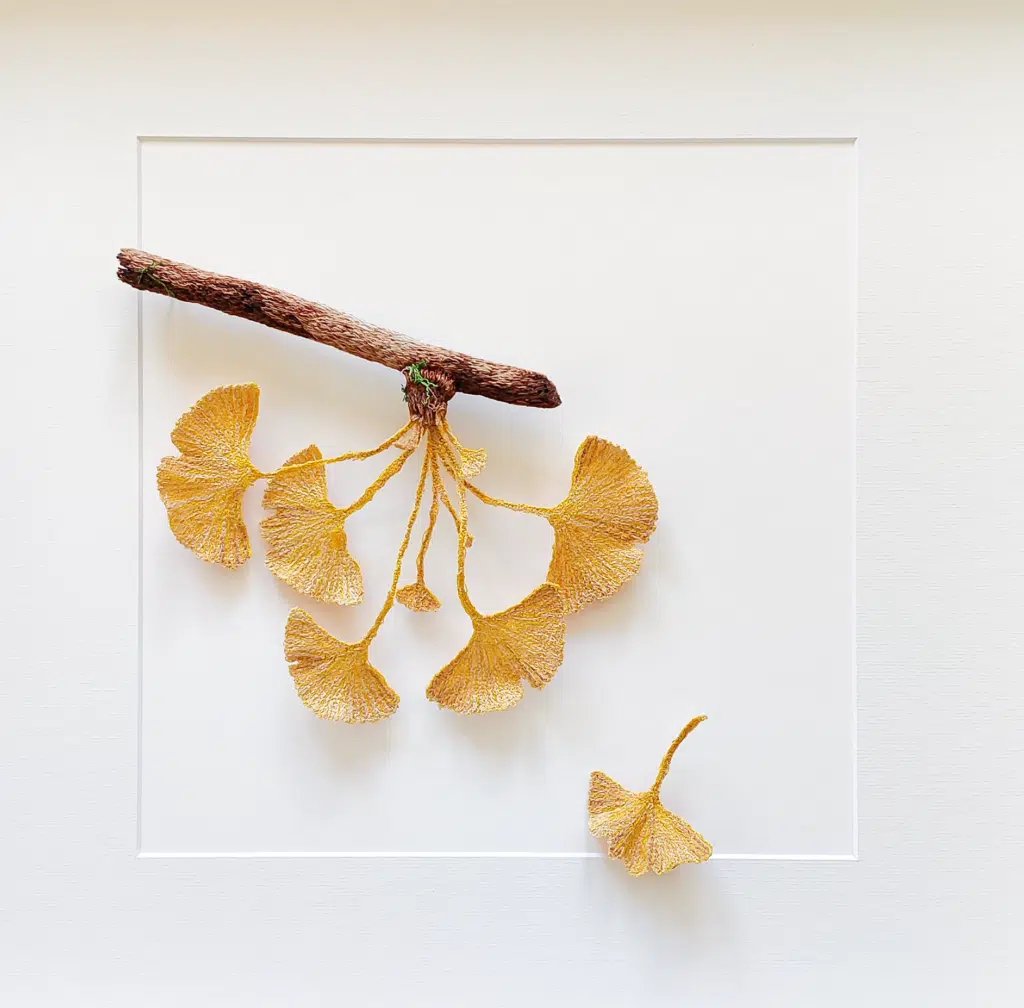
The pebble
Believe it or not, Itamar’s artistic journey started with a pebble, “It was a long journey of many years,” he says, “But it was also one moment, on a beach with beautiful pebbles, I saw a pebble, and I had a second of a thought that I wanted to embroider a pebble. So it’s been one second that it all kind of was born in a long journey as well. And I tried to capture a lot of these contradictions within my work. When it all started, I had no idea. Then I went back home and started exploring materials and techniques to make this embroidered pebble. It took a while and a lot of experimentation, but once I had one pebble ready, I still had no idea what I would do with it or if I just wanted to create this one piece as a personal project. It was very special because once I finished this first pebble, I immediately shared it with my wife, and we immediately understood that we had something here. It was more than the sum of its pieces, it was an embroidered pebble, but it said so much. It looked heavy and light, solid and transparent, and it kind of floated on its own but was also a stone. It was immediately very meaningful. It was a very special moment.”
Success
Itamar has found his success in the art world to be a surprise, “The whole thing is surreal to me, to be honest,” he says, “I’ve never imagined being where I am. I didn’t even really aim for it. I’ve never studied art, and I’ve never done art professionally. So while travelling, I was more of an observer. I dabbled a little bit with handicrafts here and there. I was very interested mainly in the techniques, history, and cultural part of it. But I never really went into doing and making besides little things. When I had this idea of three-dimensional embroidery and started creating, it was very surprising for me, and it all exploded quickly. So yeah, it’s all very surreal to me; to have all these people worldwide listening is beautiful and humbling.”
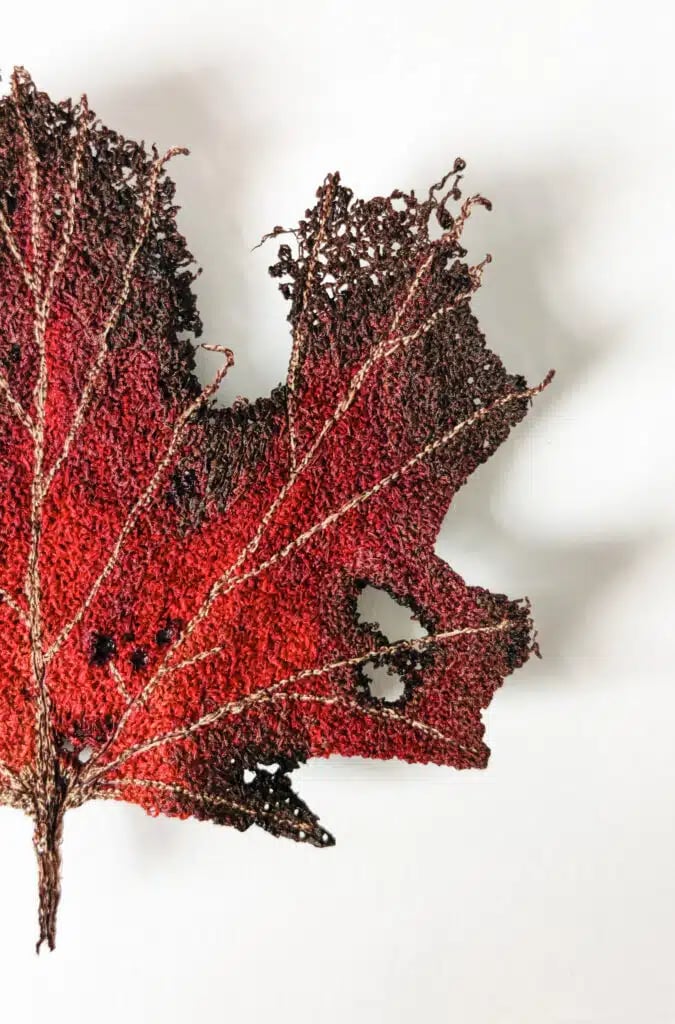
Family connections
Itamar found the opportunity to harness generational skill by involving his wife’s grandmother in his artistic process, “My wife’s grandmother used to do all kinds of fibre arts, embroidery, sewing, all kinds of crochet and knitting throughout her entire life” says Itamar, “And then my wife always did embroidery projects and sewing projects. It was a process of doing a project and then letting Grandma go over it, give feedback, and teach a little. It was a very connecting part, very bonding.“
Framing
A significant part of Itamar’s work is how he chooses to frame his art, “I love talking about display and framing because, for me, it’s an inseparable part of the artwork, he says, “First of all, I frame it like this because I think it’s beautiful. But it’s also something that I’m trying to put meaning into. They’re framed behind the museum glass to avoid reflection and protect them from UV. And they are floating above the surface. They’re not placed on the surface. As I said, first of all, I do think it looks beautiful. And I love the shadows created on the background, floating like this. The way you interact with the light and the shadows created and the transparency created. First, the glass protects from dust; we want them to last for many, many years. So the glass is protective, but besides that, there’s also a message here.
By taking something traditionally a craft, not considered art by many people and then putting it behind glass, I’m saying, ‘This is the art that belongs inside the frame’. People want to touch fabric, but putting it behind glass also creates almost a dissonance, which is what I’m aiming for. I want people to want to touch it, but they cannot and then it says: ‘It belongs there. It belongs on the wall behind glass on a beautiful screen’.”
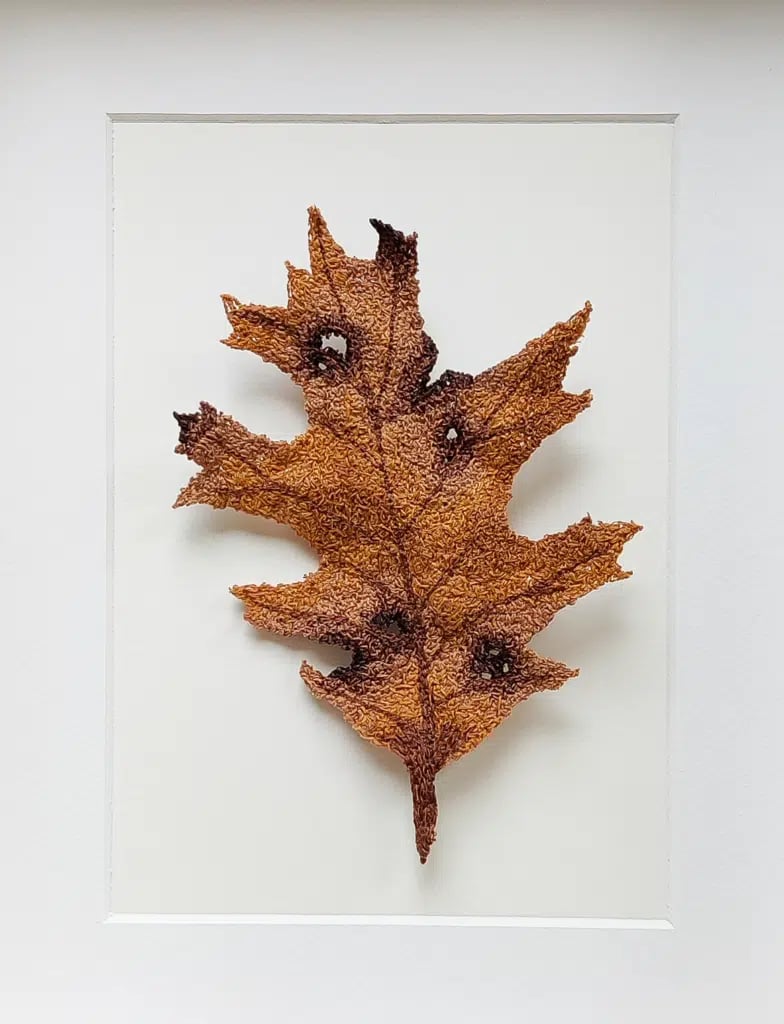
About the artist
For a decade, Itamar Yehiel explored different continents and countries and was always fascinated by the local and traditional crafts. As a self-taught artist, he uses this ancient and international language to tell new personal and global stories, cultural and emotional.
Itamar’s three-dimensional interpretations of natural objects lean on a craft that has been used for thousands of years. Yet Itamar aspires to release it from the two-dimensional fabric, give it volume and offer a contemporary voice. Freehand machine embroidery and hand stitching enable him to propose a fresh perspective on embroidery and a new portrayal of natural motifs. Using carefully thought-out framing and creating an illusion of hovering, Itamar amplifies the tension between the ancient craft and the contemporary creations while arousing intrigue and curiosity.
Itamar is interested in exploring contradictions and paradoxes. The tension between realism and illusion, organic and artificial, temporary and eternal, are all part of his artistic expression. Those come to life through objects from nature. Just like embroidery, nature is a global language. It relates to all individuals and cultures, and I use its vast variety of objects, colours, shapes and textures as a language to portray emotions and stories.
Notifications
Join Our Newsletter
OUR YOUTUBE CHANNEL
View our interviews and more on our Youtube channel!
OUR FACEBOOK GROUP
Join our Community and stay updated with our upcoming announcements!

